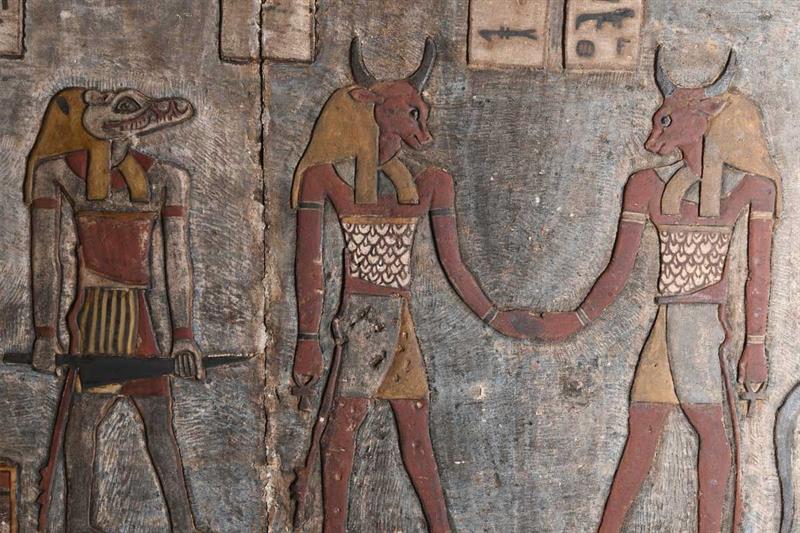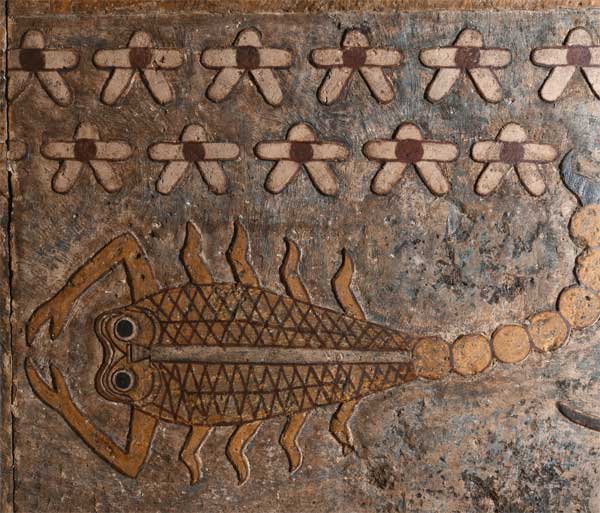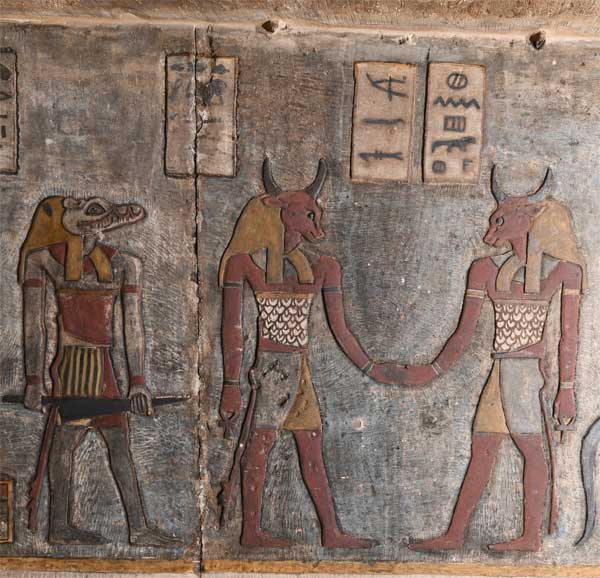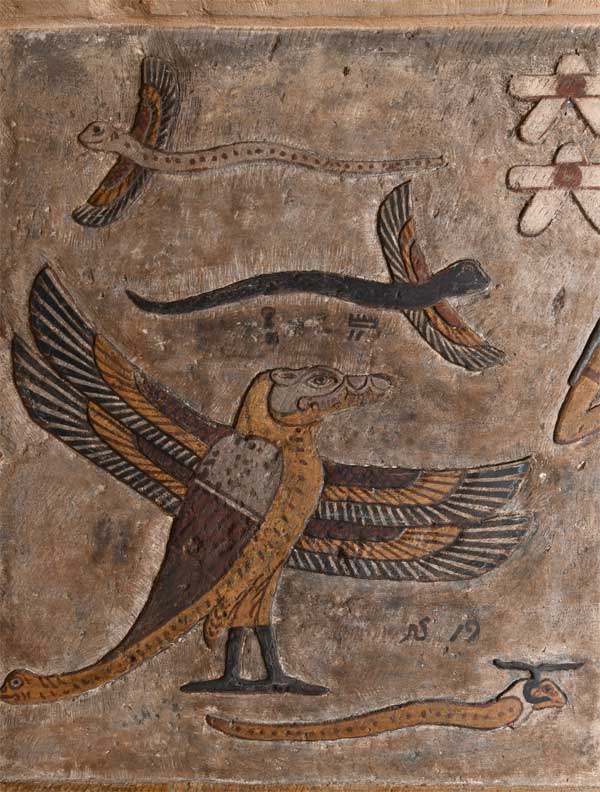In Photos: Egypt's first complete Zodiac uncovered in Luxor's Temple of Esna
Nevine El-Aref , Sunday 19 Mar 2023
Egypt's first complete Zodiac was uncovered on the ceiling of the Temple of Esna in Luxor governorate during restoration work carried out by an Egyptian-German expedition.

Visitors to the temple will be able to admire the uncovered Zodiac on the ceiling of the temple's Hypostyle Hall after years of being hidden by thick layers of soot, dirt and other matter.
After five years of cleaning and restoration work, the joint Egyptian-German mission uncovered a bright and colourful astronomical representation of the ancient Egyptian night sky.
The relief contains all the twelve Zodiac signs, the outer planets of Jupiter, Saturn and Mars, as well as depictions of the so-called seven arrows and constellations used by the ancient Egyptians in time measurement.
Dr Mostafa Waziri, Secretary General of the Supreme Council of Antiquities, said the colourful reliefs also depicted deities, animals, names of divine figures and composite beings, including a ram-headed serpent and a crocodile-headed bird.
"It is the first time to see these inscriptions and reliefs in Esna Temple," said Dr Hisham El-Leithy, Undersecretary of State for Documentation in the Ministry of Antiquities of Egypt and director of the restoration project's Egyptian side.
He added that these findings were not recorded by the temple's previous publication by late French Egyptologist Serge Sauneron, who documented the temple's reliefs in 1963 and 1975.
Christian Leitz, director of the project from the University of Tübingen, said that the Zodiac itself was part of Babylonian astronomy that was likely introduced by the Greeks who ruled Egypt during the last three centuries BC.
The Zodiac became very popular as it was used to decorate private tombs, sarcophagi, and was an important element of astrological texts and horoscopes on demotic ostraca.
Zodiacs are, however, rare in ancient Egyptian temples.
Apart from the Temple of Esna, there are only two other Zodiacs from Dendera: one in the pronaos and the other in one of the roof chapels which has since been relocated to the Louvre in Paris.
Besides Dendera, visitors to Egypt can now see these Zodiacs in their different forms and colours at Esna's temple
The restoration project on the Temple of Esna began in 2018 and was funded by the American Research Centre in Cairo.
Work was disrupted due to the coronavirus outbreak but resumed in September 2020.
The neglect suffered by the temple for centuries damaged the reliefs and inscriptions until restoration of the site began in 2018.
El-Leithy said that the mission conducted several conservation and documentation campaigns.
The Temple of Esna dates back to the Roman period.
Construction began under the reign of Emperor Claudius while its decorations were finished during the time of Emperor Decius, between 249-251 AD.
The temple is dedicated to the ram-headed god Khnum and his divine consorts.
During the 19th and 20th centuries the temple suffered from urban encroachment as houses were built around it and was even used for cotton storage during the reign of Mohamed Ali Pasha.




-- Sent from my Linux system.
No comments:
Post a Comment